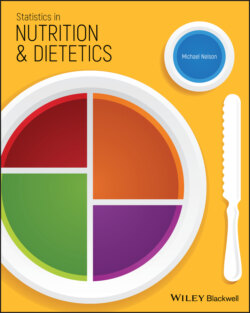Читать книгу Statistics in Nutrition and Dietetics - Michael Nelson - Страница 23
1.3.1 A Children’s Story
ОглавлениеOne of my favourite children’s stories is The Phantom Tollbooth by Norton Juster [3], in which he brilliantly summarizes the purpose of research and statistics. This may seem unlikely, but read on.
The book tells the story of Milo, a young boy living in an apartment in New York. He is endlessly bored and someone for whom everything is a waste of time. He arrives home after school one day to find a large package sitting in the middle of the living room. (I don’t know where his parents are.) He unpacks and assembles a tollbooth (he lives in America, don’t forget), gets in his electric car, deposits his coin, and drives through the tollbooth into a land of fanciful characters and logical challenges.
The story is this. The princesses Rhyme and Reason have been banished, and it is his job to rescue them and restore prosperity to the Kingdom of Wisdom. He drives from Dictionopolis (where only words are important) to Digitopolis (where – you guessed it – only numbers are important) to reach the Castle in the Air, where the princesses are held captive. He shares his journey with two companions: a Watchdog named Tock who is very vigilant about paying attention to everything (provided he keeps himself wound up); and the Humbug, ‘a large beetle‐like insect dressed in a lavish coat, striped trousers, checked waistcoat, spats and a derby hat’, whose favourite word is BALDERDASH – the great sceptic.
On the way to Digitopolis, the road divides into three, with an enormous sign pointing in all three directions stating clearly:
DIGITOPOLIS
5 miles
1 600 rods
8 800 Yards
26 400 ft
316 800 in
633 600 half inches
They argue about which road to take. The Humbug thinks miles are shorter, Milo thinks half‐inches are quicker, and Tock is convinced that whichever road they take it will make a difference. Suddenly, from behind the sign appears an odd creature, the Dodecahedron, with a different face for each emotion for, as he says, ‘here in Digitopolis everything is quite precise’. Milo asks the Dodecahedron if he can help them decide which road to take, and the Dodecahedron promptly sets them a hideous problem, the type that makes maths pupils have nightmares and makes grown men weep:
If a small car carrying three people at thirty miles an hour for ten minutes along a road five miles long at 11.35 in the morning starts at the same time as three people who have been travelling in a little automobile at twenty miles an hour for fifteen minutes on another road and exactly twice as long as one half the distance of the other, while a dog, a bug, and a boy travel an equal distance in the same time or the same distance in an equal time along a third road in mid‐October, then which one arrives first and which is the best way to go?
They each struggle to solve the problem.
‘I’m not very good at problems’,
admitted Milo.
‘What a shame’, sighed the Dodecahedron. ‘They’re so very useful. Why, did you know that if a beaver two feet long with a tail a foot and half long can build a dam twelve feet high and six feet wide in two days, all you would need to build the Kariba Dam is a beaver sixty‐eight feet long with a fifty‐one foot tail?’
‘Where would you find a beaver as big as that?’ grumbled the Humbug as his pencil snapped.
‘I’m sure I don’t know’, he replied, ‘but if you did, you’d certainly know what to do with him’.
‘That’s absurd’, objected Milo, whose head was spinning from all the numbers and questions.
‘That may be true’, he acknowledged, ‘but it’s completely accurate, and as long as the answer is right, who cares if the question is wrong? If you want sense, you’ll have to make it yourself’.
‘All three roads arrive at the same place at the same time’, interrupted Tock, who had patiently been doing the first problem.
‘Correct!’ shouted the Dodecahedron. ‘Now you can see how important problems are. If you hadn’t done this one properly, you might have gone the wrong way’.
‘But if all the roads arrive at the same place at the same time, then aren’t they all the right way?’ asked Milo.
‘Certainly not’, he shouted, glaring from his most upset face. ‘They’re all the wrong way. Just because you have a choice, it doesn’t mean that any of them has to be right’.
That is research design and statistics in a nutshell. Let me elaborate.
